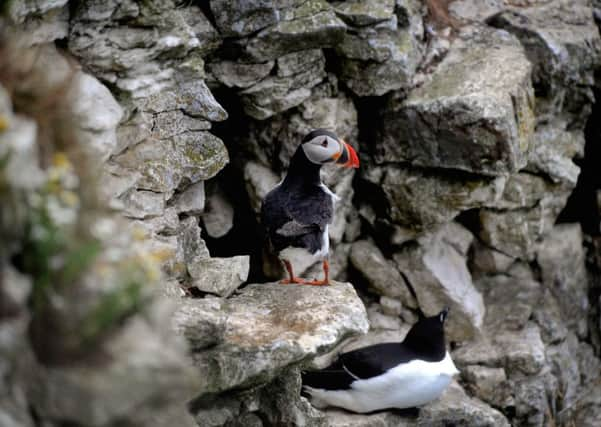Country & Coast: Climate change no joke for adorable clowns of the sea


A few decades ago around 3,500 of them nested along the great chalk cliffs but today there are less than 1,000, although making an accurate count is difficult given that they build their nests deep inside burrows.
It will not be until July that a truer picture for this year’s population emerges, when the young leave the burrows and join the older birds on the slopes above the cliffs or in fishing parties offshore.
Advertisement
Hide AdAdvertisement
Hide AdThey are the must-see species for families visiting the RSPB’s reserve at Bempton and the Yorkshire Wildlife Trust’s Flamborough Cliffs Nature Reserve.
Also known as “sea parrots” and “clowns of the sea” because of their comical looks, they stand upright like a small penguin and children adore them. Surprisingly, though, the puffin only managed to scrape into the number ten position in last year’s vote for our national bird. The poll of 224,00 people was topped by the robin.
It is worrying to read old bird books and discover that the puffin used to be one of the most numerous species in the North Atlantic.
Providing a flavour of just how common they were, one Victorian ornithologist described the cliff-top scene at a huge nesting colony in Scotland: “The whole extent of available perching ground within view was occupied, and the birds were so closely packed it would have been almost impossible to insert one’s hand anywhere amongst them.”
Advertisement
Hide AdAdvertisement
Hide AdIt is just as impossible to imagine such a scene on the Yorkshire coast today.
The problem lies not so much in the waters around Flamborough Head as in the entire North Sea. Indeed, further up the coast sizeable colonies at Coquet Island and the Farne Islands in Northumberland are also experiencing a big drop in numbers.
So what is happening? Researchers have found that areas where UK puffins spend the winter far out in the North Sea and Atlantic now provide less food, and many birds have come back to their nesting grounds underweight. There is a belief that climate change has altered the distribution of plankton with negative consequences higher up the food chain for the puffin’s diet of sand eels and crustaceans. As sea temperatures have increased off Yorkshire the sand eels have moved further north, it is said, replaced by ones which inhabit warmer seas and offer less food for puffins and their nestlings.
Climate can affect their survival onshore, too. Recent heavy summer rainfalls have been found to flood their nesting burrows. And last year it was suggested that areas of low pressure in the breeding season can suck the air out of holes, weakening the puffins.
With such complex issues governing their chances of survival, it is amazing these small birds still manage to look like the jokers of the seas.